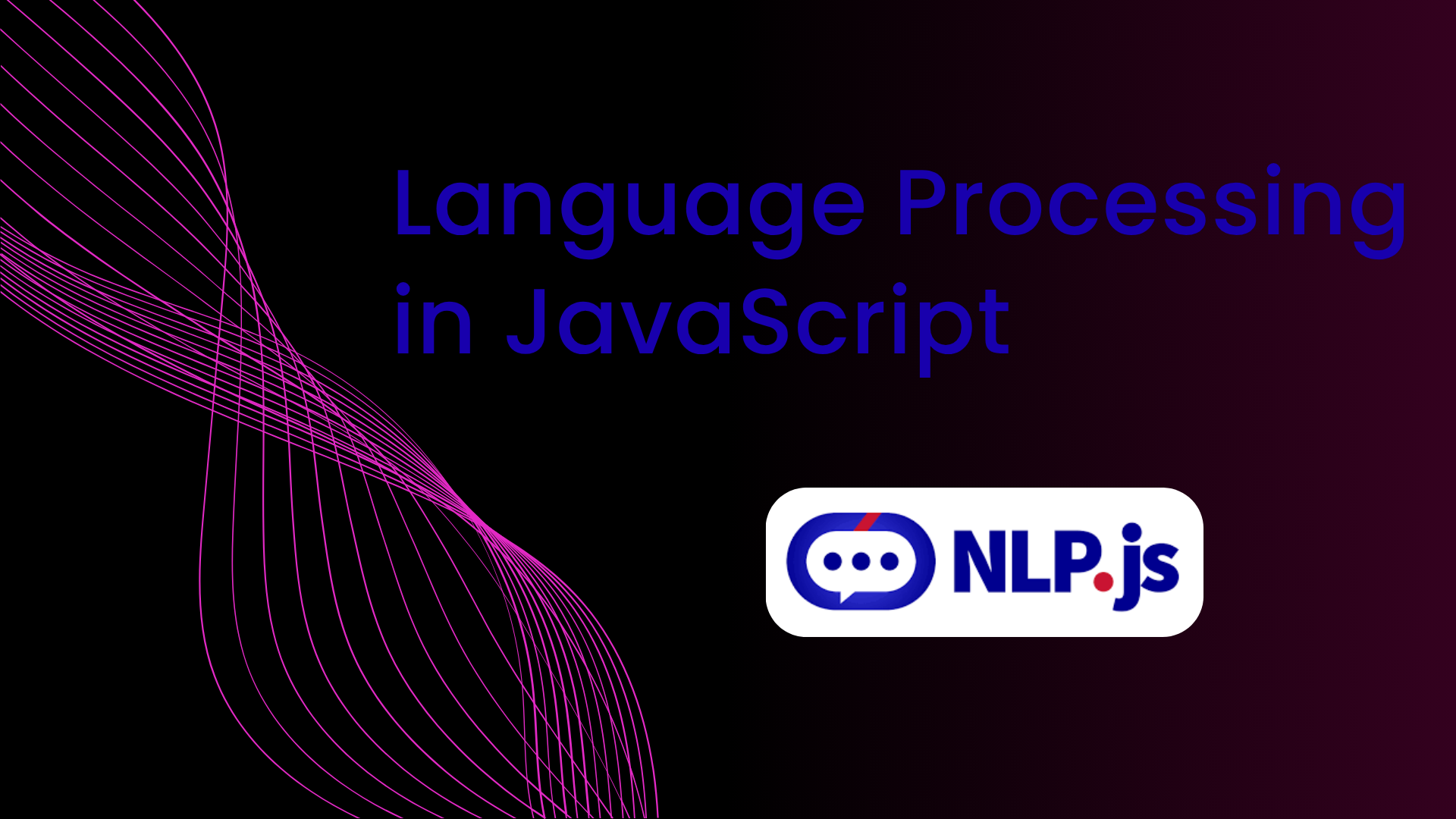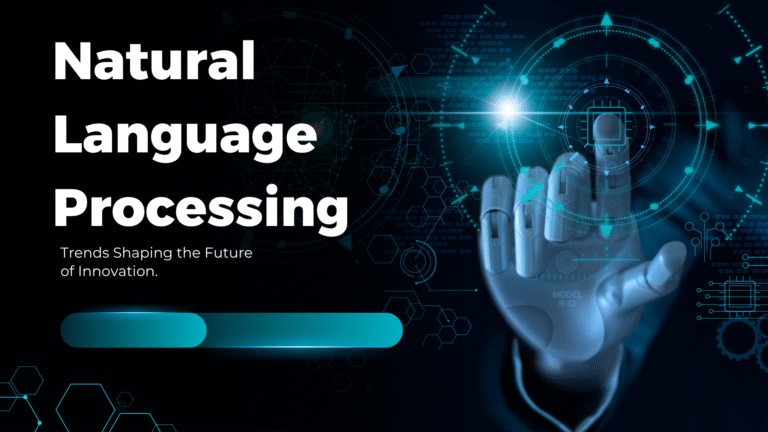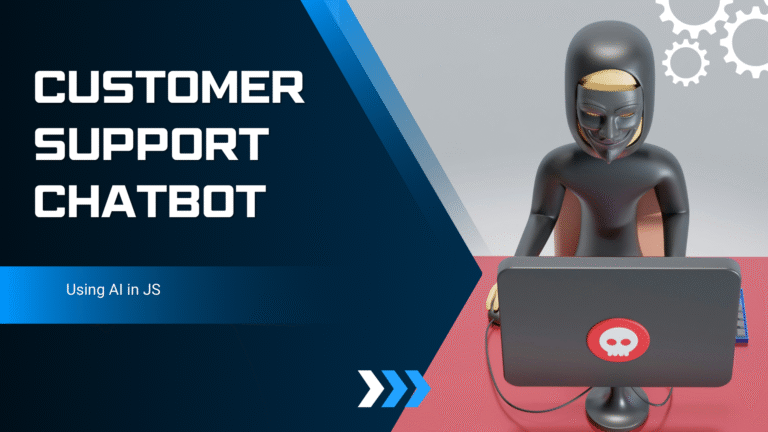NLP.js and Its Significance in JavaScript Language Processing

Introduction
- Overview of NLP.js and Its Significance in JavaScript Language Processing
Natural Language Processing (NLP) has become a pivotal facet of modern software applications, bridging the gap between human communication and machine understanding. NLP.js stands out as a powerful JavaScript library tailored for language processing tasks, enabling developers to implement sophisticated language models directly within JavaScript environments. It brings the capability to interpret user intent, extract relevant entities, and facilitate fluid conversational experiences. As an open-source framework, NLP.js encapsulates complex linguistic models into accessible modules, democratizing AI-driven language processing for web and mobile applications.
- Why Efficient Use of NLP.js Matters in Modern Applications
In an era where user expectations lean heavily towards real-time responsiveness and personalized interactions, efficiency is paramount. Utilizing NLP.js efficiently ensures minimal latency, optimized resource consumption, and scalable performance essential for delivering seamless user experiences in chatbots, virtual assistants, and automated support systems. Moreover, proficient use of NLP.js reduces development time and maintenance overhead, enabling businesses to innovate rapidly without compromising on the sophistication or accuracy of their language understanding components.
Getting Started with NLP.js
- Installing NLP.js in Your JavaScript Environment
Embarking on an NLP.js project begins with a straightforward installation process. Leveraging npm or yarn package managers, developers can integrate NLP.js seamlessly into Node.js projects. A simple command like npm install @nlpjs/basic downloads core components essential for intent recognition and entity extraction. This modular approach allows developers to include only the necessary packages, tailoring the setup to specific project requirements while minimizing bloat.
- Setting Up Your First NLP.js Project for Rapid Development
Once installed, initializing an NLP.js instance involves creating an NLP manager, defining languages, and registering intents alongside sample utterances. This initial scaffolding forms the bedrock for your language model. By structuring intents and entities early on, developers can rapidly prototype conversational flows. The built-in trainer facilitates quick iteration, enabling immediate testing of responses and validation of input handling, which accelerates development cycles dramatically.
Core Features and Capabilities of NLP.js
- Understanding Intent Recognition and Entity Extraction
Intent recognition allows the system to decipher the user’s purpose behind an input phrase, categorizing utterances into predefined actions. Entity extraction complements this by identifying and isolating key data points within the text, such as dates, locations, or product names. NLP.js integrates advanced pattern recognition and contextual analysis techniques to ensure these processes are precise, fostering natural and meaningful interactions.
- Exploring Built-in Support for Multiple Languages and Locales
One of NLP.js’s distinct advantages is its multilingual capacity. Supporting a plethora of languages and locales out-of-the-box, NLP.js accommodates the global nature of applications. This versatility means developers can deploy chatbots and assistants capable of understanding and responding in diverse languages, adapting syntax and semantics appropriately, thus broadening the reach and inclusivity of their digital solutions.
Building a Basic Language Processing Model
- Defining Intents and Utterances with NLP.js
At the core of any NLP model lies the mapping between intents and the variations of user utterances that correspond to those intents. Defining these mappings with NLP.js involves providing sample phrases that the model can learn from, enabling it to generalize beyond explicitly programmed sentences. This flexibility ensures the system handles the unpredictable nature of human language effectively.
- Creating and Managing Entities for Precise Data Extraction
Entities enhance the chatbot’s contextual understanding by pinpointing specific information embedded within user inputs. NLP.js allows for the creation of custom entities tailored to domain-specific data, ensuring that extracted information aligns perfectly with application needs. Managing entity hierarchies and synonyms enriches the system’s interpretive power, making conversations more relevant and actionable.
Training and Evaluating Your NLP.js Model
- How to Train the Model Using Sample Data
Training involves feeding the NLP.js manager with annotated datasets comprising intents, utterances, and entities. This supervised learning phase enables the model to recognize patterns and make probabilistic decisions on new inputs. The iterative nature of training, supported by NLP.js’s APIs, allows continuous refinement, ensuring the model adapts and improves over time.
- Measuring Accuracy and Improving Performance Through Iteration
Evaluating model efficacy requires analyzing metrics such as precision, recall, and overall accuracy. NLP.js provides tools for testing the model against unseen data to identify weaknesses or misclassifications. Through successive iterations augmenting training data, tuning parameters, or restructuring intents developers can elevate the model’s robustness and reliability.
Advanced Techniques for Efficient NLP.js Usage
- Leveraging Contextual Conversations and Dialog Management
Beyond static intent matching, NLP.js supports context-aware dialogues, maintaining conversation state across multiple user interactions. This capability enables complex multi-turn conversations, where responses depend on previous exchanges, enhancing user engagement and making chatbot interactions feel genuinely human.
- Optimizing Response Time and Resource Utilization
Efficiency in real-time applications hinges on minimizing processing delays. Techniques such as model caching, selective training, and asynchronous processing within NLP.js help reduce computational overhead. Profiling and optimizing code paths further ensures the application remains responsive even under heavy loads.
Integrating NLP.js with Other JavaScript Frameworks
- Connecting NLP.js with Express, React, or Node.js for Full-Stack Solutions
NLP.js is inherently compatible with the JavaScript ecosystem, enabling smooth integration with popular frameworks. For backend services, integrating with Express facilitates robust API endpoints that serve NLP functionalities. On the frontend, React components can leverage NLP.js outputs to create dynamic, interactive user interfaces that respond intelligently to user input.
- Best Practices for Seamless Frontend and Backend Communication
Ensuring efficient data exchange between frontend and backend components involves adopting standardized protocols such as REST or WebSocket APIs. Proper serialization of NLP.js responses, coupled with effective state management on the client side, guarantees consistent and fluid conversational experiences.
Handling Multilingual Processing in NLP.js
- Configuring NLP.js for Different Languages and Dialects
Multilingual support demands careful configuration of language-specific models within NLP.js. Developers must load relevant language packages and train models on locale-specific data to accommodate idiomatic expressions, grammar, and cultural references, ensuring natural communication regardless of the user’s linguistic background.
- Tips for Managing Language-Specific Nuances and Variations
Handling homonyms, slang, and regional dialects requires fine-tuning entity recognition and intent classification. Incorporating domain-specific lexicons and leveraging transfer learning techniques help NLP.js models adapt to nuanced language use cases efficiently.
Implementing Custom Plugins and Extensions
- Extending NLP.js Functionality with Custom Code
To address unique business requirements, NLP.js supports plugin architecture, allowing developers to augment or override default behaviors. Custom processors, entity extractors, or response generators can be crafted, enhancing the core NLP engine’s versatility.
- Utilizing Community Plugins to Enhance Language Understanding
The vibrant NLP.js community offers numerous plugins that extend capabilities, ranging from sentiment analysis to advanced entity recognition. Leveraging these contributions accelerates development and enriches the feature set of NLP applications.
Debugging and Troubleshooting Common Issues
- Identifying Frequent Pitfalls and How to Resolve Them
Common challenges include misclassified intents, incomplete entity extraction, or slow response times. Systematic debugging through sample input tests and review of training data consistency is critical. NLP.js provides verbose logging options that assist in isolating faults and understanding model decisions.
- Using Logging and Diagnostic Tools for Model Refinement
Sophisticated diagnostic tools capture input-output mappings, enabling developers to visualize conversational flows and spot anomalies. This iterative refinement is indispensable for elevating the NLP model from prototype to production-grade reliability.
Deploying NLP.js Applications Efficiently
- Hosting Considerations for Scalable Language Processing
Deployment strategies must balance scalability, cost, and latency. Cloud platforms offering serverless architectures or container orchestration simplify horizontal scaling, accommodating fluctuating user demand without degradation of NLP service quality.
- Securing Your NLP.js Application and Managing API Keys
Given the sensitivity of language data, robust security practices are essential. Encrypting communication channels, securely storing API credentials, and implementing authentication guardrails protect user privacy and safeguard against unauthorized access.
Performance Optimization Strategies
- Techniques for Reducing Latency and Improving Throughput
Utilizing techniques like batching requests, model quantization, and hardware acceleration can dramatically cut processing times. Profiling the NLP pipeline pinpoints bottlenecks, guiding targeted optimizations.
- Balancing Accuracy with Speed in Real-Time Applications
Trade-offs between model complexity and response speed require careful calibration. Lightweight models may sacrifice some accuracy but ensure responsiveness, while heavier models can offer deeper understanding at the cost of latency. NLP.js allows flexible tuning to meet application-specific demands.
Use Cases and Practical Applications
- Examples of NLP.js in Chatbots, Virtual Assistants, and Data Analysis
NLP.js powers an array of applications: customer support chatbots that intelligently route queries, virtual assistants that comprehend multi-turn dialogues, and data analytics tools extracting insights from textual datasets. Its versatility makes it suitable across industries and domains.
- Case Studies Demonstrating Efficient Language Processing in JavaScript
Real-world implementations illustrate NLP.js’s capacity to enhance user engagement and operational efficiency. Case studies reveal how companies successfully harness NLP.js to automate workflows, personalize user interactions, and gain competitive advantage.
Conclusion
- Recap of Efficient Practices for Using NLP.js in JavaScript
Harnessing NLP.js effectively demands a blend of strategic planning, iterative training, and integration expertise. Prioritizing modular design, multilingual support, and performance optimization leads to robust language processing solutions capable of meeting contemporary demands.
- Future Prospects and Emerging Trends in NLP.js Development
As NLP continues to evolve, emerging trends such as integration with cognitive computing, enhanced emotional intelligence, and low-resource language models promise to expand NLP.js’s capabilities further. Staying abreast of these developments ensures that developers remain at the forefront of linguistic AI innovation.



